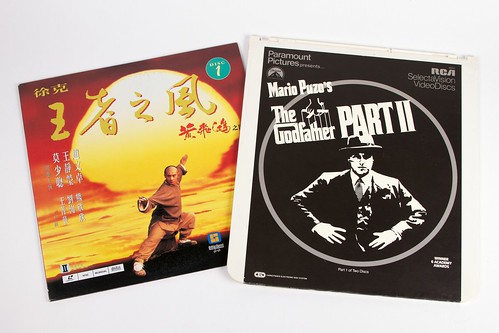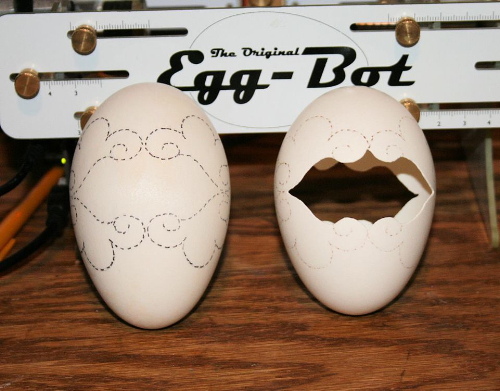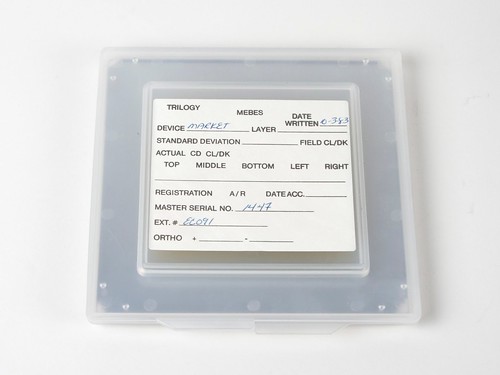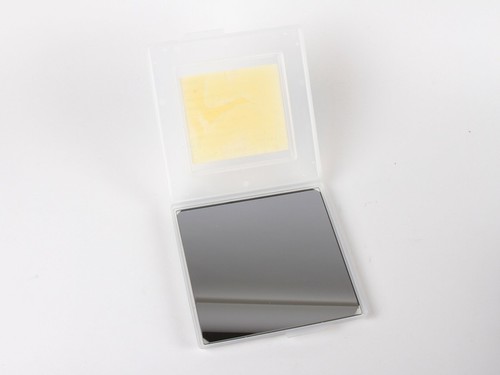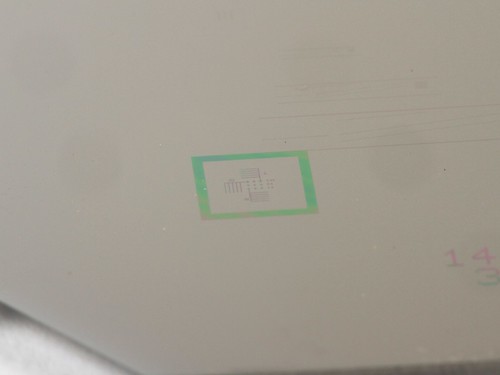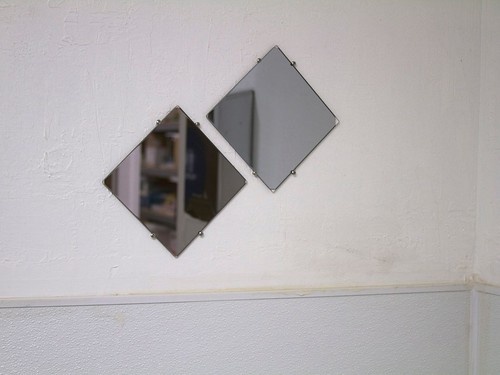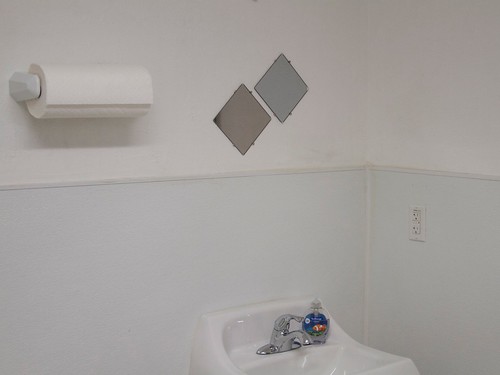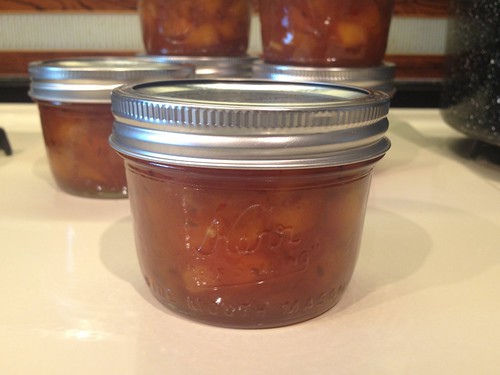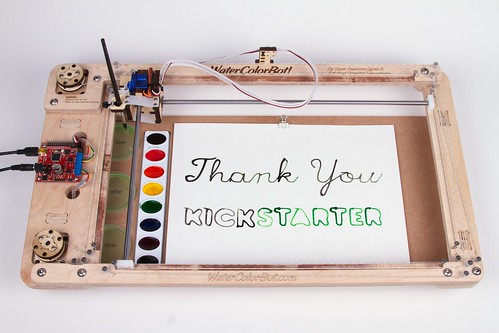
Our sincere gratitude goes out to all of our Kickstarter backers and everyone who has helped to spread the word about our WaterColorBot Kickstarter campaign. It has been incredibly rewarding to see each new pledge come in, from friends both old and new. We’re thrilled to announce that we exceeded our funding threshold of $50,000 after just over 60 hours: WaterColorBots are coming!
Today we recorded a little video that you can see on our update page of the WaterColorBot saying (well, painting) “Thank You.” One of the questions we have heard a few times (and have added to our FAQ) has been, “Can the robot go get more paint when it runs dry?” The answer is yes, as you can see in the video.
So is it all in the can and ready to ship? No, not quite yet. You may notice one goof in the video: an unnecessary color change. We’re still sanding away at the rough edges, in order to make sure that everything is ship-shape before we ship.
Thanks for all of the great questions and comments. We’ve already started adding to the FAQ based on your feedback, and we’ll continue to do so as the fantastic questions keep coming in. We’ve already got some excellent suggestions for future software directions, and changes and additions to the API. Getting real feedback from all of you about the different ways that you hope to use the WaterColorBot is immensely helpful in guiding us forward.
We’ve seen the project posted all over the internet, including on Adafruit, Boing Boing, Engadget, Tech Crunch, Gizmodo Germany, and even as far away as Indonesia at Jeruknipis. Many of you have posted it to Twitter and Facebook, and we’re grateful for all of your support.
We had planned to post an update after a couple of days, but we didn’t imagine that we would get to post about surpassing our threshold so soon! We’ll be posting more updates in the near future. There are a lot of interesting details about the WaterColorBot that we haven’t yet written about and are looking forward to sharing with you.




